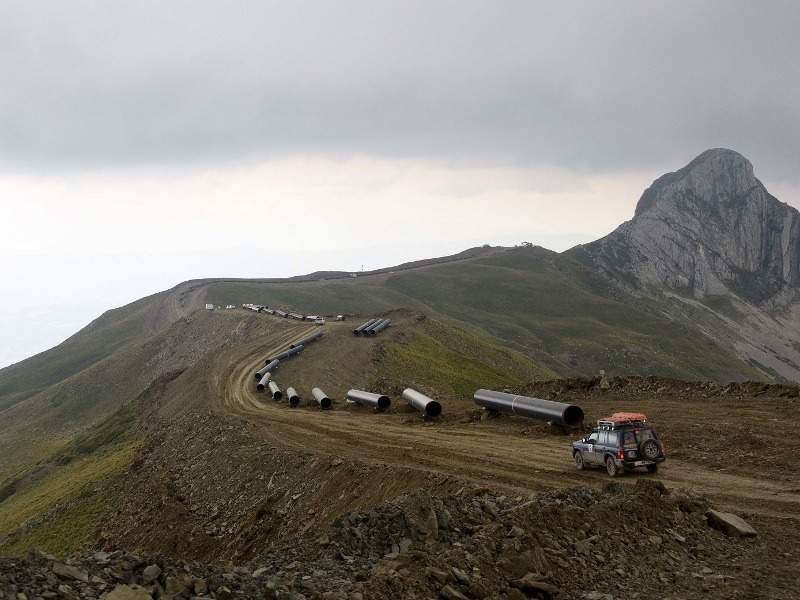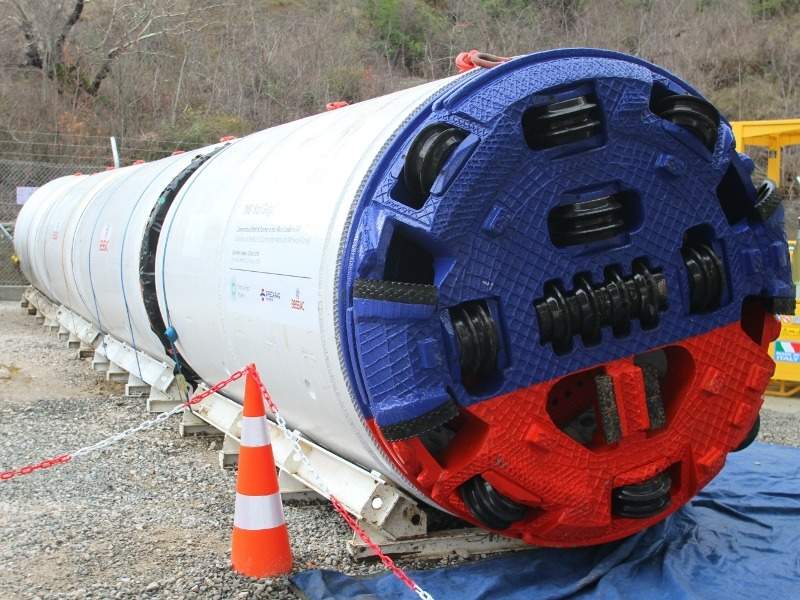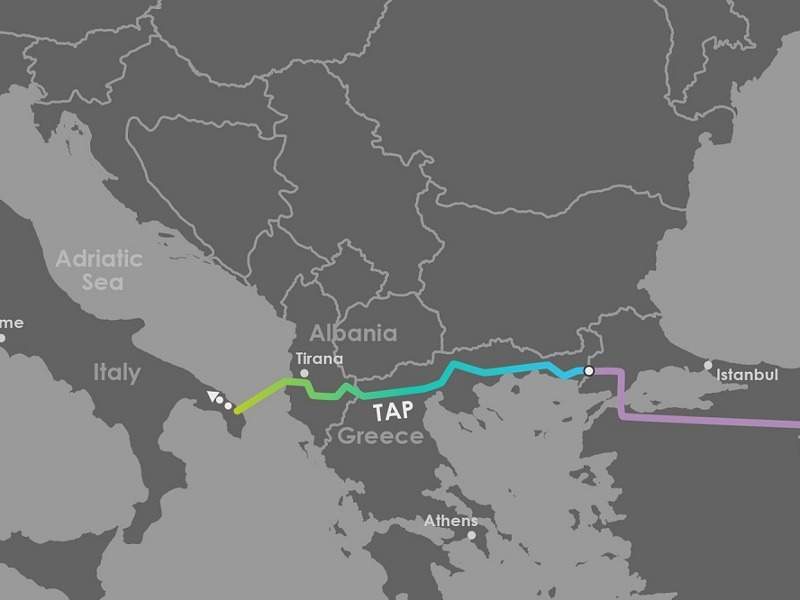The Trans Adriatic Pipeline (TAP) is an 878km-long pipeline under-construction to transport natural gas from the Caspian region to Europe through Greece, Albania, and Italy.
Construction on the €4.5bn ($5.16bn) pipeline project was officially started in May 2016, while the preparatory works had begun in June 2015. The pipeline construction was more than 80% completed at the end of 2018.
Connecting with the Trans Anatolian Pipeline (TANAP), the TAP pipeline originates at the Greek-Turkish border. It is expected to start delivering the natural gas produced at Azerbaijan’s Shah Deniz II gas development to Europe from 2020.
The initial capacity of the pipeline will be 10 billion cubic meters (bcm) a year, which can be expanded to 20bcm/y in future.
Project Gallery
-

Construction of the TAP pipeline was started in May 2016. Image courtesy of Trans Adriatic Pipeline.
-

The 878km-long Trans Adriatic Pipeline (TAP) will deliver natural gas from Azerbaijan’s Shah Deniz II development project to Europe. Image courtesy of Trans Adriatic Pipeline.
-

The TAP pipeline is expected to commence operation in 2020. Image courtesy of Trans Adriatic Pipeline.
-

The TAP pipeline forms an important part of the Southern Gas Corridor project. Image courtesy of Trans Adriatic Pipeline.
The development partners for the pipeline are BP (20%), the State Oil Company of the Azerbaijan Republic (SOCAR, 20%), Italian natural gas infrastructure company Snam (20%), Fluxys (19%), Enagás (16%), and Swiss energy company Axpo (5%).
TAP signed an agreement with the Greek national natural gas system operator DESFA for the maintenance of the Greek section of the pipeline, in December 2018.
Trans Adriatic Pipeline project financing
The Trans Adriatic Pipeline (TAP) development partners achieved financial closure after securing €3.9bn ($4.46bn) funding for the project from a group of financial institutions in December 2018.
The lenders for the project are the European Investment Bank (EIB), the European Bank for Reconstruction and Development (EBRD), 17 commercial banks, and three export credit agencies (ECA) including bpifrance, Euler Hermes and Sace.
The EIB provided a direct loan facility of €700m ($797m), which is guaranteed by the European Union under the European Fund for Strategic Investments EFSI.
The EBRD provided €500m ($569m) of direct loan and €500m ($569m) of syndicated loan for the pipeline project.
The total ECA facilities for the project amount to €1.43bn ($1.63bn), while direct commercial term loan facilities are worth €635m ($723m).
TAP project background
The Trans Adriatic Pipeline (TAP) is an important part of the $45bn Southern Gas Corridor (SGC) project, which envisions the development of a 3,500km energy infrastructure network to bring natural gas supply from the Caspian region to Europe via new routes.
The SGC project is aimed at improving the security and diversity of energy supply to Europe. It involves the Shah Deniz-2 upstream gas development project in the Caspian Sea offshore Azerbaijan, and three pipeline projects including the South Caucasus Pipeline (SCPX) from Azerbaijan to Georgia, the Trans Anatolian Pipeline (TANAP) in Turkey, and the TAP.
The TAP will offer connection possibilities to gas networks in South Eastern, Central, and Western Europe.
The European Union (EU) designated TAP as a Project of Common Interest (PCI) under the trans-European energy infrastructure (TEN-E) initiative in October 2013.
Trans Adriatic Pipeline route details
The Trans Adriatic Pipeline (TAP) starts at Kipo in Greece at the border with Turkey, where it connects to the Trans Anatolian Pipeline (TANAP).
The pipeline then runs for 550km across the entire territory of Northern Greece before entering Albania at the Trestenik village in the Devoll Municipality.
It runs onshore for 215km in Albania to arrive at the Adriatic coast approximately 17km north-west of Fier.
The TAP will then run offshore for 105km in the Adriatic Sea before making landfall at Lecce, near San Foca in the Melendugno municipality in southern Italy.
The pipeline will further run 8km onshore to a Pipeline Receiving Terminal (PRT) in the municipality of Melendugno, to connect to the Italian natural gas network.
Trans Adriatic Pipeline (TAP) design and capacity
The Trans Adriatic Pipeline comprises 54,387 steel pipe joints weighing 516,184 tonnes (t) in total.
The onshore sections of the pipeline in Greece and Albania will be of 48in diameter, while the entire offshore segment as well as the onshore component of the pipeline in Italy will be of 36in-diameter.
The pipeline includes two compressor stations, 30 block valve stations, two landfall stations, one metering station, and one receiving terminal along its route.
The compressor stations are located near Kipoi in Greece and near Fier in Albania.
Out of the 30 block valve stations, 22 are in Greece, while eight are in Albania. The metering station will be located at Bilisht, Albania.
The pipeline will be initially capable of supplying 10bcm/y of natural gas, which can be doubled in the future by installing two additional compressor stations at Serres in Greece and at Bilisht in Albania.
Contractors involved in the Trans Adriatic Pipeline (TAP) project
A joint venture of Bonatti (Italy) and J&P AVAX (Greece) was contracted for the engineering, procurement, and construction (EPC) of 360km of the pipeline in segment in Greece.
SPIECAPAG (France) was awarded the EPC contract for a 185km onshore segment in Greece as well as for a 215km segment in Albania. SPIECAPAG also carried out the pipeline river crossing at the Greek-Turkish border.
A joint venture of Renco (Italy) and Terna (Greece) was awarded the EPC contract for the two compressor stations. Renco was also awarded the EPC contract for the pipeline receiving terminal.
Siemens was contracted to supply six gas turbine turbo compressor units for the TAP’s compressor stations.
A joint venture of Enereco and Max Streicher was contracted for the construction of the 8km-long onshore segment in Italy.
Saipem was awarded the engineering, procurement, construction, and installation (EPCI) contract for the 105km offshore section of the pipeline across the Adriatic Sea.
Statoil prepared the front-end engineering design (FEED) for the offshore section of the pipeline.
Honeywell was contracted for the engineering, procurement, and installation of the Supervisory Control and Data Acquisition (SCADA) telecommunications and security systems of the TAP.
Suppliers involved
Corinth Pipeworks was contracted for the supply of approximately 495km of 48-in diameter line pipes for the project in Greece.
Salzgitter Mannesmann International was contracted to supply 297km of 48in-diameter pipes for the onshore section and 110km of 36in-diameter pipes for the offshore section.
Industria Meccanica Bassi Luigi was contracted for the engineering and supply of 48in and 36in piggable T-pieces, welded elbows, and scraper traps units for the pipeline.
Nuova Giungas (Valvitalia Group) was awarded the engineering, manufacturing and delivery contract for 48in and 36in isolating joints of the pipeline.
RMA of Germany was contracted to supply of 55 ball valves and actuators for the pipeline.
Himachal Futuristic Communications (HFCL), a company based in India, was contracted to supply approximately 1,550km of fiber optic cable for the project.
Other contractors involved in the project are MTC-MAKEDONIKI, ABKons, ENY, UTG, and INFODIM.
